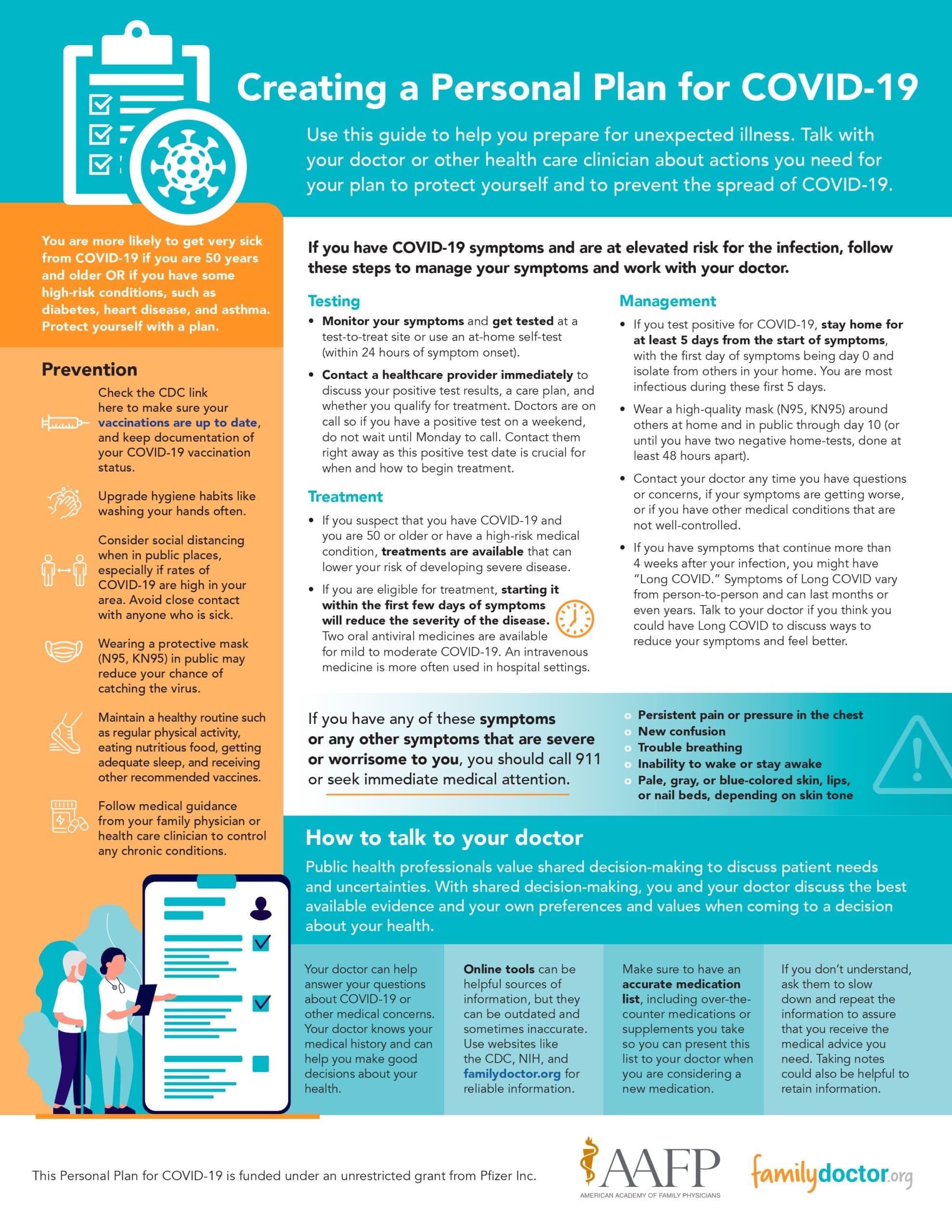COVID-19
COVID-19: A Brief Overview
COVID-19 (coronavirus disease) is an infectious disease caused by the SARS-CoV-2 virus, which was identified in 2019. Since then, there have been nearly 775 million reported cases of COVID-19 worldwide. In early 2024, the World Health Organization (WHO) said COVID-19 remains a pandemic but is in a different phase. Symptoms of COVID-19 can be similar to those of a cold or the flu. Getting the COVID-19 vaccine is the best protection from getting very ill from COVID-19.
COVID-19 Essential Information

Coronavirus (COVID-19)
Find out more about COVID-19 including symptoms, causes, prevention and treatment options.

Long COVID: Symptoms and Treatment
Most people who get sick with COVID-19 will recover within a week or even a few days. But for some, the symptoms of the disease can linger for weeks, months, or sometimes longer.

COVID-19: Top 10 Tips From Your Family Doctor
Family doctors recommend these things to help protect yourself–and others–from COVID-19.
COVID-19 Diagnosis

Do I Have COVID-19 or the Flu?
COVID-19 and the flu have similar symptoms and are both caused by viruses. But they’re caused by different viruses and require different treatments.

I Tested Positive for COVID-19. Now What?
If you test positive for COVID-19, or suspect that you have it, it is important that you follow recommendations from the Centers for Disease Control and Prevention (CDC) to avoid spreading the infection.
COVID-19 Prevention

COVID-19 Vaccine for Ages 12 and Older
The American Academy of Family Physicians, American Academy of Pediatrics and the CDC recommend that everyone 6 months and older get the updated 2023-2024 vaccine to protect against COVID-19.

Understanding COVID-19 Vaccine Options
Staying up to date on your COVID-19 vaccine helps protect you from serious illness that could lead to hospitalization or death. Learn how mRNA and non-mRNA COVID-19 vaccines work and talk with your doctor to choose the best option for you.

COVID Vaccines for Young Children: What Parents Need to Know
Vaccinating children can help protect family members. This includes siblings who may be too young to get vaccinated and family members who may have an increased risk of getting sick if they are infected.

COVID-19 Vaccine and Pregnancy
COVID-19 vaccination is the best way to protect yourself and your pregnancy from serious outcomes. The protection the COVID-19 vaccine offers also reduces the severity of the illness and lessens how sick both mother and baby can become from COVID-19.

Unsure About the COVID-19 Vaccine? Talk to Your Family Doctor
For family doctors, talking about the importance of getting vaccinated is not a new thing. They’ve been counseling patients on recommended immunizations for years and are happy to discuss your concerns.

Debunking Common COVID-19 Vaccine Myths
Misinformation on the COVID-19 vaccines is prevalent, and it can be difficult to know what’s true and what’s not. Here, family physicians bust the most common COVID-19 vaccine myths.

COVID-19 Vaccine Frequently Asked Questions
The COVID-19 vaccine is safe and effective, and can reduce severe illness in children and adults. It cannot cause COVID-19 or interact with your DNA.
2025-2026 AAFP COVID-19 vaccine recommendations

COVID-19 Video
COVID-19 has affected many people, but some groups have been hit harder. Older adults, people with health issues like asthma or diabetes, and some marginalized communities have faced more challenges. Some people are unsure about getting the COVID-19 vaccine. If you’re not sure about the vaccine, talk to your doctor. They can answer your questions and help you make the best choice for your health.
COVID-19 At-A-Glance Guides






















